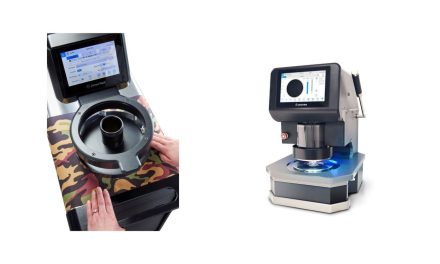 HARTING Customised Solutions (HCS) has been working with Siemens to create a new way of installing the cabling and switchgear for offshore wind turbines, in the process saving installation time and providing the extra project management flexibility needed when working in some of the world’s most difficult sea conditions.
HARTING Customised Solutions (HCS) has been working with Siemens to create a new way of installing the cabling and switchgear for offshore wind turbines, in the process saving installation time and providing the extra project management flexibility needed when working in some of the world’s most difficult sea conditions.
The Dudgeon Offshore Wind Farm is one of the biggest and most exciting energy projects currently under construction in Europe. The £1.5 billion project will harness offshore wind to generate 402MW of power for more than 410,000 UK homes. Located about 24 miles off the North Norfolk coast, the project is led by companies Statoil and Statkraft, and Masdar.
The turbines and grid connections are designed, supplied and commissioned by Siemens. Each turbine generates 6MW, and stands about 150m tall with a blade diameter of 120m. They also stand in 18-25m of water with a mean wave height of 1.1m, and the average wind speed is 9.8m/s – challenging construction conditions indeed.
Design started in 2014 and the project is due to start generating in early 2017 before being fully commissioned later that year. Keeping to this schedule has meant planning at every stage to work around the dangerous sea conditions. This limits the period available for construction to between late spring and early autumn each year. This last point requires great ingenuity in every part of the project.
 Siemens is constantly looking at ways to improve existing designs and processes for the benefit of the project and the customer. Scott Williams, project manager for Siemens, said; “For project efficiency the transition pieces with integrated switchgear are installed offshore as soon as the monopole supports have been installed. This is approximately 12 months before the turbines will be installed. We therefore needed a simple way to connect the transition piece switchgear at the bottom of the tower with the turbine switchgear at the top at that stage, but which would also be able to withstand the elements until the following spring.”
Siemens is constantly looking at ways to improve existing designs and processes for the benefit of the project and the customer. Scott Williams, project manager for Siemens, said; “For project efficiency the transition pieces with integrated switchgear are installed offshore as soon as the monopole supports have been installed. This is approximately 12 months before the turbines will be installed. We therefore needed a simple way to connect the transition piece switchgear at the bottom of the tower with the turbine switchgear at the top at that stage, but which would also be able to withstand the elements until the following spring.”
This is where HARTING stepped forward. Having previously worked with Siemens on a range of other projects, introducing them as subcontractors was a safe strategy for Siemens; an important point in the minds of all project managers on a project of this complexity. The task was to create connecting cables and a cabinet to house the switchgear, and package them so they could be protected from the environment through the winter.
Siemens also wanted a solution to reduce the time taken to actually make the connection. On most projects of this sort, a team of two to four engineers rigs the cables and connects each individually, top and bottom, taking 1-2 days per turbine. With 67 turbines to connect in the infamously changeable waters of the North Sea, this was a process that needed serious re-engineering.
For HARTING what started off as a simple job of providing cabinets and components quickly grew into a complete solution based on HARTING Customised Solutions (HCS) wide range of capabilities. HCS brings together market leading connectors with expert local and global production capabilities.
Scott Williams, said; “The HARTING design not only provided a suitable IP (Ingress Protection) rating to protect the cables from severe weather and a corrosive salty atmosphere, but it meant that all connections could be built into the switchgear. Each turbine and transition piece could then simply be plugged together and tested, meaning that a team of two could do the work in as little as a day. Given the cost of working offshore, let alone the time constraints on the project, this was a massive improvement.”
 Technical Requirements
Technical Requirements
Each turbine required HARTING to connect the 2 pieces of switchgear including control cabling with an Input/Output of 24 wires, a 24vDC cable, and cabling for the 230vAC supply. A total of 67 control cabinets were required each with one suite of cables (1 x I/O; 1 X 24vdc; and 1 x 230vac). The key parameters to take into consideration when selecting the cable and connectivity were size, dimensions, vibration resilience, finger safe connectors and the salt atmosphere.
The HARTING Han® M housing range was selected due to its environmental characteristics. The IP65 rating and aluminium die-cast material ensured it met Siemens environmental requirements. These were kitted with protected modules ensuring finger safe connection. Crimp contacts were also specified for vibration resistance. HARTING’s in-house engineering team provided drawings and wiring diagrams to match the panel dimensions for each housing.
The end result was 67 bespoke fully assembled box builds, each with a suite of cables, created within the specified budget and delivered on time, allowing Siemens to install reliable and finger safe control cabinets. This solution will be considered on future windfarms as a saving for offshore working effort and time.
www.HARTING.co.uk/energy
salesUK@harting.com
Tel: +44 (0) 1604 827500


